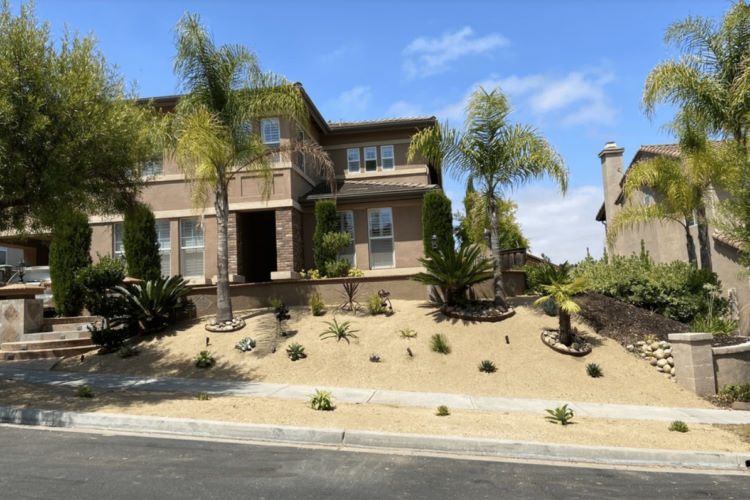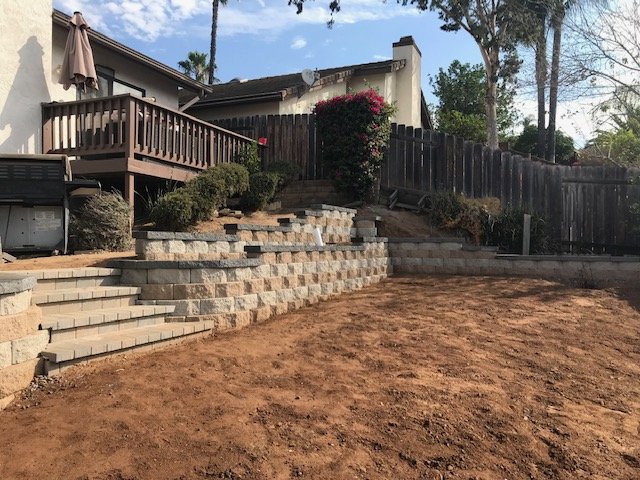
If you live in an area with water problems, choosing a drought-resistant experienced landscape designer is crucial. With native low-water plants, you will save not only time but also money in the long run. If you are looking to save money on your water bill, drought-resistant landscaping is an ideal choice. You will not only beautify your home but also conserve the environment. The amount of water you conserve is determined by the ground cover, plants you choose, and the irrigation method. Therefore, if you are looking to save water via a landscape design, you have three approaches:
• Limiting the space that’s dedicated to natural grass lawns
• Xeriscape design for a new yard
• Xeriscape to redesign your existing landscape
What you need to know about xeriscaping:
Xeriscaping is a landscaping design to help homeowners living in arid and semi-arid areas. The design entails using drought-tolerant plants, native species of plants, and incorporating irrigation methods that save water, for instance, mulch. In xeriscaping, native species of plants may discourage using fertilizers and pesticides, thus conserving the environment. When done right, xeriscaping reduces the use of fossil fuels, thus reducing the carbon footprint. The habitable environmental conditions also help wildlife thrive while increasing your curb appeal and sometimes property value.
What is the concept of xeriscaping?
The concept entails the following:
• Use of proper irrigation systems
• Soil conservation via soil improvement
• Using native and drought-resistant plant species
• Ground cover to conserve water and soil
Although you can prefer DIY as a homeowner, hiring a professional landscape designer is the best option. Since a professional is skilled, experienced, and well-versed with xeriscape landscaping, he will ensure you get the best landscaping services and that the design will meet your water conservation goals. You do not have to risk on do-it-yourselfers or handymen to save money only to get everything wrong.
How to conserve water using xeriscaping
It is essential to understand the process of xeriscaping whether you want to do it yourself or hire a professional. Researching beforehand comes in handy, and if you have limited knowledge or skill, you are bound to make mistakes. Here are some of the things you need to know before you get started:
Rainfall amount and distribution annually
• The native plants in your region help determine the best species that will conserve water and thrive. It is essential to decide on the maximum size a plant will grow before you make a choice. A plant that offers shade is the right choice because it acts as a windbreaker, conserves moisture and soil.
• Exotic plant species to avoid because they might be invasive
• The natural turf that has adapted in your region
Plan your lawn – if you have natural grass either in your front or backyard, limiting the grass area is vital. Alternatively, install artificial turf because it requires little maintenance, less water, and easy to manage.
Soil testing – if you are doing it yourself, buy a soil testing kit to determine the soil’s alkalinity or acidity. You can also test for the micro and macronutrient to determine soil supplements to use. However, suppose you have hired a professional. In that case, he will carry out the soil test, explain the results, and offer a professional opinion on what you should do before and after landscaping.
Mulching – mulching plays a vital role in environmental conservation. Besides conserving water, smothering weeds, mulching prevents soil erosion, adds nutrients into the soil after decomposition, and habits soil microorganisms. Some of the mulch options you can use include compost, leaves, bark, or wood chips.
Some people are misguided because they think you cannot have water saving landscaping while still having a beautiful and elegant back or front yard. This is not the case because your creativity and your landscaping ideas will determine your landscape design. Ergo, if it means using flowering native plants to create a border, replacing part of your lawn with a rock garden, or creating walkways in your yard, you are the architect. You are not limited to a specific design because you can save water in many ways. Consider your family needs and preferences before determining the landscaping design to choose from.
Conserving water by choosing the best landscape design:
• Limit turf area – limit turf area in your backyard because they consume a lot of water. However, if you must use turf, zoysia and Bermuda are good options because they require less water.
• Improve the soil – use organic material such as manure, grass clippings, peat moss, and straw when planting. Organic material improves root growth, increases soil aeration, improves drainage, and soil water retention.
• Introduce a rain garden – use native shrubs, flowers, and perennials to help reduce water runoff when it rains.
• Use other methods to capture water – if it rains, you need to have rain barrels, cisterns, or install porous paving to capture runoff water. If you have a water pump, you can use the collected water to irrigate.
• Group plants as per their water needs – if you have to water your plants, it is easier to ration the water. For instance, drought-resistant will require less water; thus, there is no need to water them regularly.
Even though you are looking to conserve water, you do not have to sacrifice your home’s visual appeal or functionality. There are plenty of water-saving landscaping ideas to choose from and implement. However, you need to research thoroughly, seek professional help and opinion, and get ideas from friends or colleagues who have achieved the same feat. If you are looking for an attractive curb appeal while still saving water, using ornamental grasses, rock gardens, pavers, artificial grass, and flowering native plants are recommended.
Finally, if you decide to hire a professional, it is crucial to determine their experience, ratings, reviews, and previous projects. Take your time to explain what you need, listen to the expert for ideas, and try to develop an excellent landscaping design that will beautify your home while conserving water. Ideally, it is not easy to achieve everything, but if you are resourceful and patient, you can achieve your home’s dream landscape design.






